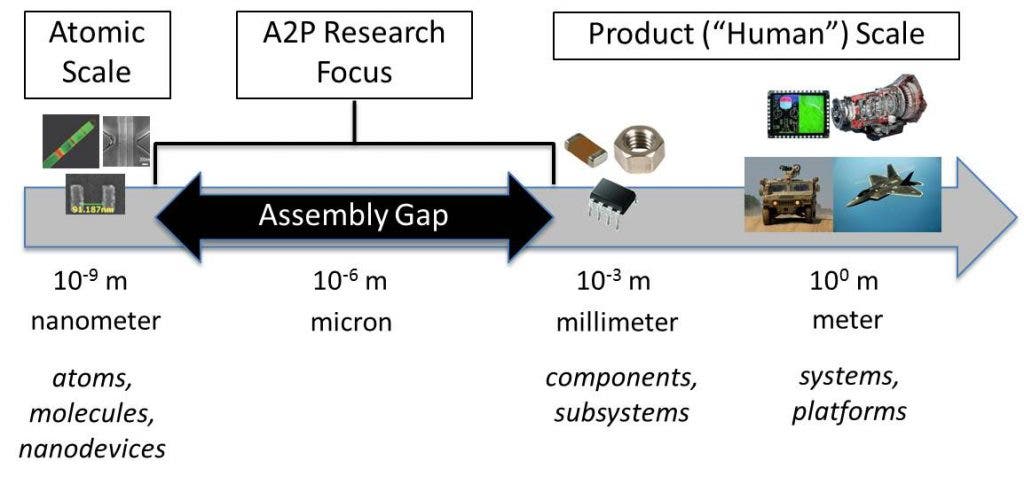
DARPA just announced the launch of a new extremely exciting program: Atoms to Product (A2P). The aim is to develop a suit of technologies that will allow manufacturing of products from the nanoscale up to what we know as ‘life size’. The revolutionary miniaturization and assembly methods would work at scales 100,000 times smaller than current state-of-the-art technology. If found successful, then DARPA might be able to make macroscale products (anything from the size of a tennis ball to a tank) that exhibit nanoscale or quantum properties usually encountered when we delve in the core of atoms.
When fabricated at extremely small scales (a few ten-billionths of a meter), materials exhibit extremely peculiar behavior which in some cases can be useful to society. These include quantized electrical characteristics, glueless adhesion, rapid temperature changes, and tunable light absorption and scattering that, if available in human-scale products and systems, could offer potentially revolutionary defense and commercial capabilities.
“If successful, A2P could help enable creation of entirely new classes of materials that exhibit nanoscale properties at all scales,” DARPA program manager John Main said in a news release, “It could lead to the ability to miniaturize materials, processes and devices that can’t be miniaturized with current technology, as well as build three-dimensional products and systems at much smaller sizes.”
This kind of scaled assembly, working from the nanoscale up to millions of orders of magnitude in size, is widely found in nature. Prime examples include all plants and animals, which are effectively systems assembled from atomic- and molecular-scale components a million to a billion times smaller than the whole organism. What DARPA is trying to do is to lay a foundation for a similar assembly method that might lead to a whole new class of materials.
So, how excited should we be about this? Not all DARPA projects work and the defense agency is known for dabbling in a slew of domains. When its projects work, however, they offer the opportunity to transform the world. Though a defense institution, DARPA has slipped many of its tech to civilian hands. To name a few: internet, GPS or graphical user interface.






